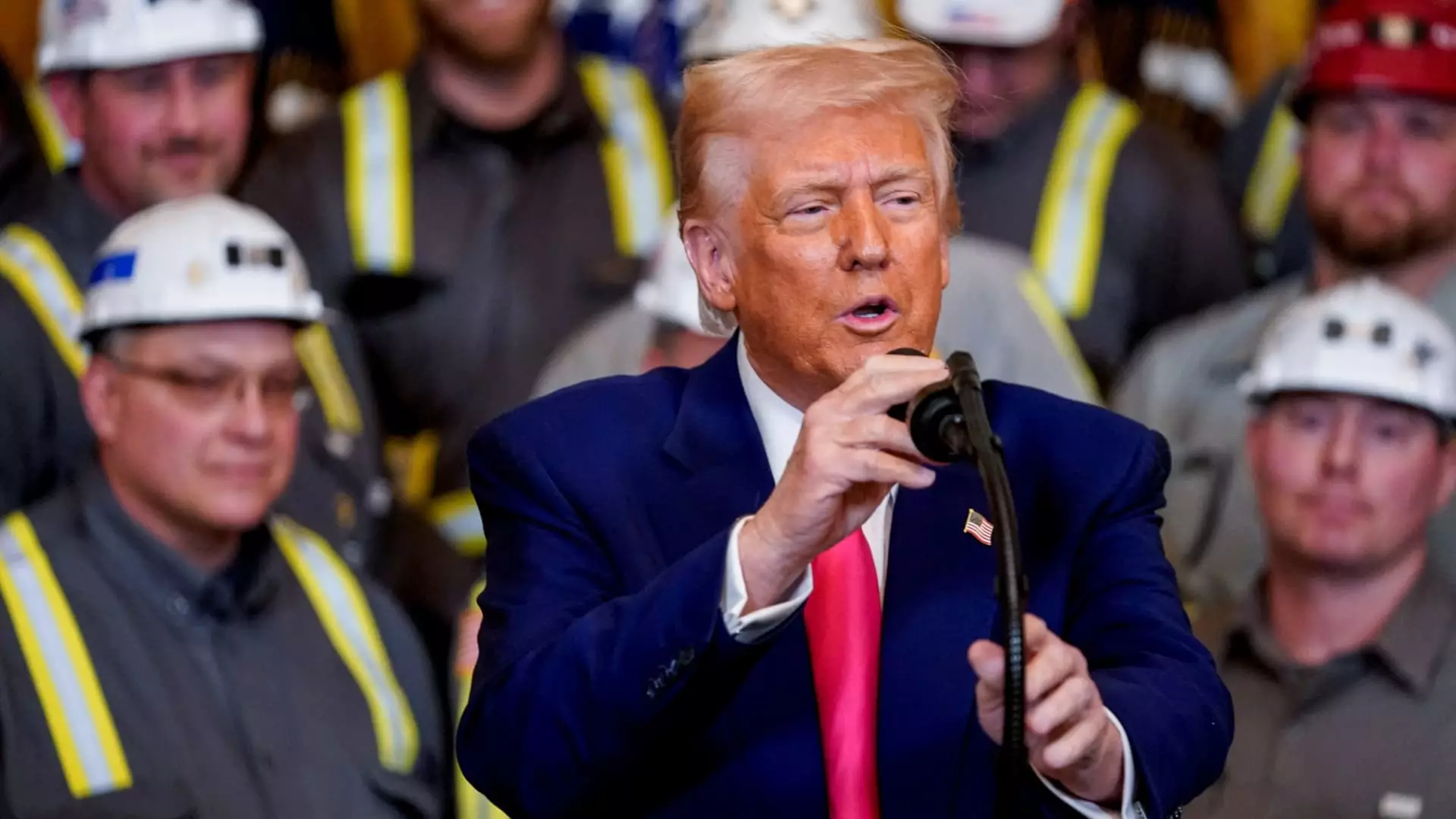In a strikingly misguided effort, President Donald Trump has turned his sights on reviving the ailing coal industry in the United States, proposing its use as an energy source for the burgeoning field of artificial intelligence (AI). By issuing an executive order aimed at identifying extant coal-powered infrastructure to support data centers for tech giants, Trump has ignited fierce debate about the viability and morality of such an endeavor. The overwhelming sentiment is one of incredulity, as it exemplifies a willful ignorance of environmental realities and the technological needs of the future.
As a center-wing liberal, it bewilders me how this call to action for coal fails to comprehend both the ethical implications of climate change and the fact that the tech industry is rapidly shifting towards cleaner energy alternatives. Jacking up the struggling coal sector doesn’t merely revive a bygone era; it resurrects a dead horse who should have received the last rites decades ago. While the coal lobby may see this initiative as a potential lifeline, it symbolically enshrines a profoundly outdated energy model that is on its last legs.
A Detriment to Our Environmental Goals
Coal-fired power plants are notorious for their staggering emissions, producing more carbon dioxide per kilowatt-hour than any significant alternative apart from oil. In an era when the tech industry is pouring billions into renewables, this push toward coal stands in sharp contrast to the overarching narrative of sustainability being championed by tech leaders. While Trump touts coal as a “good, clean” power option, it’s apropos to highlight the falsehood of that characterization. Relying on coal sends a dangerous message: that economic interests can overshadow immediate threats to the planet’s health.
Let us not overlook the stark reality that coal is an environmental dead weight dragging down necessary progress. Coal miners may rejoice momentarily at this policy pivot, but it does little in addressing the long-term decline of coal, which has plummeted from accounting for 51% of U.S. electricity generation in 2001 to a meager 16% today. The administration’s reliance on coal as a backup energy source raises an inconvenient question: why prioritize a resource that both the economy and environment have all but deemed obsolete?
The Irony of Technology and Energy
As companies race to expand data centers to support AI capabilities, they are facing mounting energy demands that undeniably complicate the transition to renewables. Yet, the rhetoric suggesting that coal is a suitable answer overlooks the broader context of energy evolution. Executives from major tech companies such as Amazon, Nvidia, and Anthropic are now confronted with the challenging task of balancing energy availability with sustainability. Their reluctance to commit to coal usage speaks volumes about the dichotomy between the administration’s antiquated vision and the industry’s forward-thinking agenda.
Interestingly, natural gas, which emits significantly lower CO2 levels compared to coal, emerges as a more pragmatic short-term solution. Yet, even natural gas is not a long-term fix but rather a transitional measure that ought to be approached with caution. The phrase “all of the above” only sounds good in theory; in practice, it suggests an inadequate lack of vision. We should not dilute our commitment to decarbonization in the name of meeting immediate electricity needs.
A Question of Viability and Commitment
One cannot help but feel the acute disconnect between Marxist environmentalist goals and the nostalgia that motivates coal’s renewed spotlight. Nat Sahlstrom’s characterization of Trump’s executive order as a “dog whistle” resonates deeply, shining a light on how politics often serves entrenched interests rather than addressing practical market realities. Contradictions abound. Why are we discussing the addition of coal plants when the tech industry acknowledges both the existence and necessity of renewable energy and natural gas to meet future energy demands?
As we currently stand at this critical juncture, coal has become marginalized by cleaner technologies and economically unviable solutions that boost energy efficiency while curbing emissions. Trump’s intended “plan” could lead to exacerbated grid challenges, risking energy stability but more painfully prolonging our reliance on harmful fossil fuels at a time when we should unequivocally be letting them go.
In my view, what we urgently need is a vision that embraces innovation rather than clinging to old frameworks that no longer serve us. It’s a moral imperative that industries and policymakers align with sustainable practices to create a resilient energy future. Reinventing the wheel with coal infrastructure will only wheel us back into a stagnant cycle we can no longer afford, both environmentally and politically.


Leave a Reply